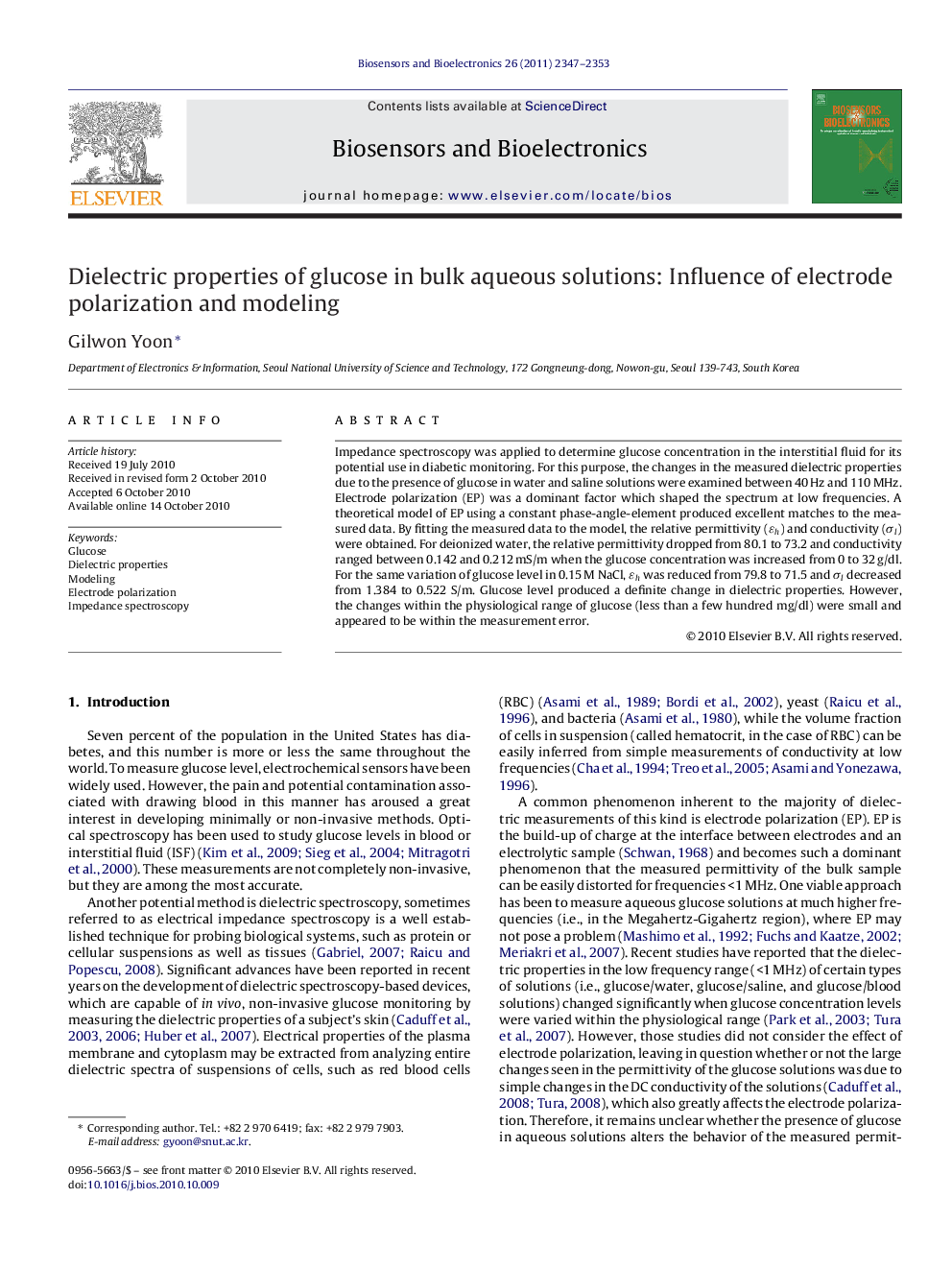| Article ID | Journal | Published Year | Pages | File Type |
|---|---|---|---|---|
| 868204 | Biosensors and Bioelectronics | 2011 | 7 Pages |
Impedance spectroscopy was applied to determine glucose concentration in the interstitial fluid for its potential use in diabetic monitoring. For this purpose, the changes in the measured dielectric properties due to the presence of glucose in water and saline solutions were examined between 40 Hz and 110 MHz. Electrode polarization (EP) was a dominant factor which shaped the spectrum at low frequencies. A theoretical model of EP using a constant phase-angle-element produced excellent matches to the measured data. By fitting the measured data to the model, the relative permittivity (ɛh) and conductivity (σl) were obtained. For deionized water, the relative permittivity dropped from 80.1 to 73.2 and conductivity ranged between 0.142 and 0.212 mS/m when the glucose concentration was increased from 0 to 32 g/dl. For the same variation of glucose level in 0.15 M NaCl, ɛh was reduced from 79.8 to 71.5 and σl decreased from 1.384 to 0.522 S/m. Glucose level produced a definite change in dielectric properties. However, the changes within the physiological range of glucose (less than a few hundred mg/dl) were small and appeared to be within the measurement error.
